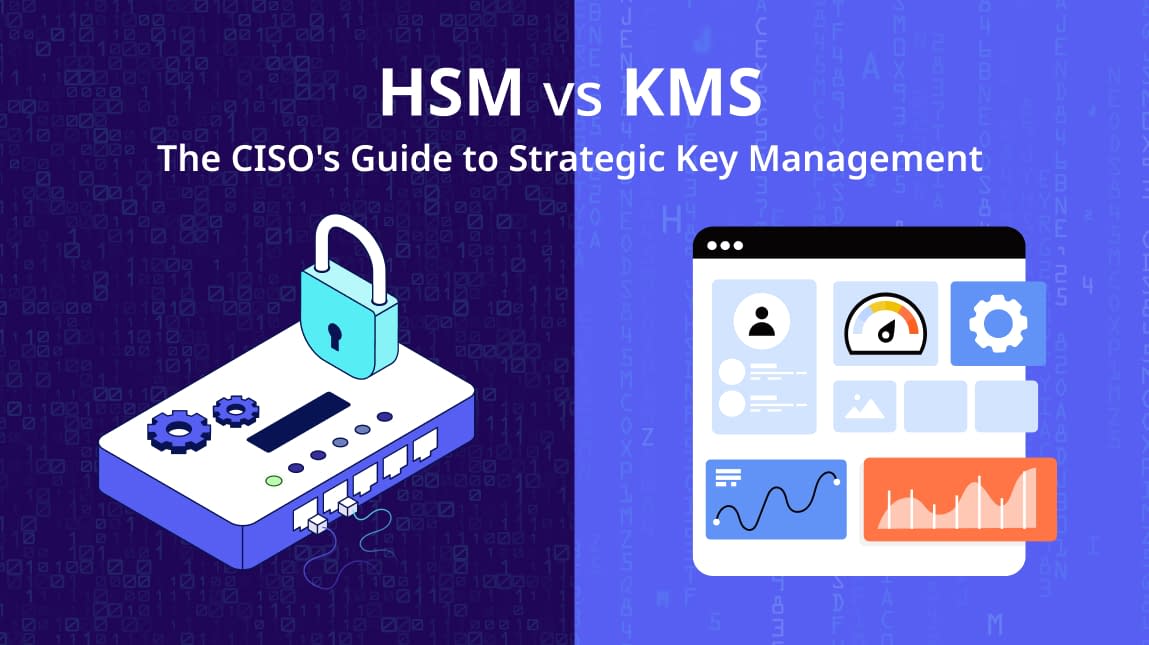Financial institutions do not need a reminder that testing with sensitive data is a balancing act. In the financial services industry, the stakes are high and getting it wrong can result in regulatory fines, reputational damage, and loss of customer trust. With strict global mandates like GDPR and PCI-DSS supplemented by regional banking regulations such as SAMA (Saudi Arabia), GLBA, SOX, HIPAA and PIPEDA/PHIPA (Canada), ensuring holistic compliance is key.
Yet, many banks, credit unions, and other financial institutions still rely on legacy approaches such as basic built-in database search functionalities, manual masking, environment segmentation, or simplistic synthetic datasets, that introduce risk and inefficiency. These outdated methods create gaps from both a regulatory compliance and efficiency standpoint. To succeed in today’s data protection environment, a comprehensive test data management strategy enabled by leading platforms is critical.
Why a Secure Test Data Management Strategy is Critical
Financial institutions process some of the most regulated and complex data in the world, from personally identifiable information (PII) and payment card information (PCI) to transaction histories, loan records, and investment portfolios. Unlike other industries, financial services must prove compliance not just with one regulation, but with a patchwork of domestic, cross-border, and industry-specific standards:
- GDPR (EU/UK) – Strict limitations on processing, storing, and testing with personal data.
- PCI-DSS 4.0 – Strong requirements for handling payment card data in test environments.
- HIPAA / PHIPA – Privacy requirements for banking institutions that handle health-linked financial data (HSAs, insurance, etc.).
- GLBA (US) – Customer financial privacy and safeguarding rules.
- OSFI & SOX – Oversight for banks and investment firms on financial reporting and operational controls.
Without a comprehensive, automated test data management strategy, banks risk failing audits, delaying system releases, or even suffering data breaches. Secure test data underpins nearly every critical initiative in financial services:
- Core banking platforms – Account creation, deposits, payments, and lending workflows must be tested against realistic data to validate everything from account hierarchies and balance calculations to loan amortization schedules. Even small inconsistencies in masked datasets can break core processes or leave undetected defects.
- Digital channels – Mobile apps, online portals, and APIs now dominate customer interactions. These front-end systems rely on test data that reflects the scale, variety, and complexity of production data, ensuring smooth onboarding, transaction processing, and customer service experiences.
- Fraud detection and AML systems – Anti-money laundering and fraud prevention engines require realistic but anonymized data to train, test, and validate. Synthetic datasets often miss subtle behavioral patterns, such as structuring, layering, or unusual transfer chains, that only emerge in production-like masked data.
- Analytics and reporting – From risk modeling and stress testing to regulatory reporting and business intelligence, banks require test data that mimics real market and customer conditions. Data that is too “clean” fails to uncover calculation or aggregation errors.
- Third-party integrations – Open banking initiatives, FinTech partnerships, and cloud migrations all involve constant data exchange across multiple platforms. Without secure, consistent masking and referential integrity, institutions risk compliance failures and integration defects that can disrupt customer-facing services.
The challenge is that many financial institutions continue to rely on outdated practices such as manual data masking, copying production datasets directly, or segmenting test environments. These approaches may have worked in the past, but they:
- Do not scale with today’s massive volumes of financial data.
- Cannot maintain referential integrity across dozens of interconnected systems.
- Fail to meet regulatory requirements that demand irreversible anonymization.
- Introduce operational risk, where gaps are only discovered during audits—or worse, after a data incident.
Without a formalized test data management strategy, institutions risk undermining both compliance and innovation. Modern financial services depend on automated, secure, and production-like test data pipelines to keep pace with regulatory scrutiny, digital transformation, and customer expectations.
Key Considerations: Test Data Management for Financial Services
Test data management in financial services is a balancing act between regulatory compliance, operational efficiency, and innovation. Test data management is a critical component of data protection within a broader cybersecurity and compliance framework for financial services organizations. When designing a TDM strategy, institutions must address several critical considerations:
1. Regulatory Complexity
Financial institutions must comply with a patchwork of global, regional, and industry-specific regulations. Unlike other industries, compliance isn’t limited to one framework—data often falls under multiple mandates simultaneously (e.g., GDPR + PCI-DSS + GLBA). A successful strategy must be flexible and auditable across all applicable laws.
2. Continuous Data Demand
Banks and credit unions require a constant pipeline of secure test data to fuel development, QA, DevOps, and integration projects. Legacy methods that rely on manual provisioning or occasional masking runs cannot keep up with modern release cycles. On-demand test data availability is a must.
3. Data Complexity and Interconnectedness
Financial data is not flat, it is inherently relational, hierarchical, and deeply interconnected. A single customer record often spans dozens of systems and datasets, linking together:
- Customer profiles → personal details, KYC/AML documentation, and identifiers (SSNs, SINs, passport numbers).
- Accounts → multiple checking, savings, credit, and investment accounts tied to a single customer.
- Transactions → payment histories, deposits, withdrawals, interest accruals, and card activity.
- Loans and mortgages → collateral information, repayment schedules, and linked guarantors.
- Securities and investments → positions, trades, and portfolio performance metrics.
In modern financial services environments, these relationships often stretch across core banking systems, customer relationship management platforms, payment processors, data warehouses, and regulatory reporting tools.
When sensitive data is masked without preserving referential integrity, several issues can arise including:
- Broken linkages – A masked customer ID that no longer ties consistently across loan, account, and transaction tables will render test scenarios inaccurate.
- Invalid data states – Masked values that don’t maintain logical consistency (e.g., mismatched loan-to-customer mappings) lead to errors that wouldn’t occur in production.
- Incomplete risk testing – Risk models and stress tests rely on accurate cross-relationships between customer profiles, accounts, and transactions. If these are disrupted, results can’t be trusted.
- Failed integrations – Open banking APIs, AML systems, or partner FinTechs often rely on multi-system linkages. If masked data doesn’t carry through correctly, integrations will fail testing.
4. Variety of Data Sources
Financial institutions manage structured data (databases), semi-structured data (XML, JSON), and unstructured data (flat files, logs, documents). A robust TDM strategy must address all formats and sources, not just core databases.
5. Balancing Realism with Security
Testing with “too clean” synthetic data misses edge cases like fraud patterns, while testing with unsecured production data risks compliance violations. Effective TDM must deliver realistic, production-like datasets that remain fully anonymized.
6. Vendor and Third-Party Risks
With the rise of open banking, FinTech integrations, and cloud adoption, test data often flows outside the organization. Ensuring that all shared or external datasets are masked, tokenized, and compliant is crucial to reducing vendor-related risks.
7. Audit and Reporting Readiness
Regulators and internal risk teams expect not only secure practices but also proof of compliance. A modern TDM strategy must generate audit-ready reports, demonstrating that sensitive data is identified, anonymized, and consistently protected across environments.
Key Components of a Modern Test Data Management Strategy
To overcome the limitations of legacy approaches, financial institutions must adopt a test data management (TDM) strategy that is secure, automated, and designed for scale. The following components form the foundation of an effective program:
1. Data Discovery and Classification
The first step is knowing where sensitive data resides. Financial institutions store data across core banking systems, data warehouses, CRM platforms, cloud services, and unstructured sources like XML and flat files. Automated discovery and classification ensures that PII, PCI data, and other sensitive fields are identified and tracked before they ever reach a test environment.
👉 Explore more: 7 Features to Look for in PII Data Discovery Tools
2. Data Masking and Tokenization
Irreversible static data masking and vaultless tokenization allow institutions to replace sensitive values while preserving the realism of production data. This ensures test data can be used safely across environments without risk of re-identification, while maintaining the referential integrity needed for accurate banking workflows.
👉 Explore more: Data Masking for the Banking Industry: Key Considerations for Financial Institutions
3. Data Subsetting
Full production copies are often too large, expensive, and risky for lower test environments. Data subsetting allows financial institutions to generate smaller, representative datasets that maintain compliance and performance, while reducing infrastructure and storage costs.
👉 Explore more: Data Subsetting
4. Synthetic Data Generation (as a Complement)
Synthetic data alone is insufficient in regulated industries, but it plays a role when combined with masked production data. It can be used to model rare events, edge cases, or new product scenarios, all while ensuring no real customer data is exposed.
👉 Explore more: Guide to Synthetic Data Generation
5. Compliance and Audit Readiness
Beyond protecting data, institutions must prove compliance. A modern TDM platform should embed regulatory frameworks such as GDPR, PCI-DSS, HIPAA, and regional mandates like PIPEDA and SAMA into its processes, and generate audit-ready reports to satisfy both internal and external stakeholders.
👉 Explore more: Test Data Management for Security and Compliance
6. Automation and Continuous Delivery
Manual processes cannot keep pace with the rapid release cycles of digital banking. Automated provisioning of secure test data—integrated into CI/CD pipelines—ensures development and QA teams always have compliant, production-like data on demand, without slowing innovation.
👉 Explore more: Automated Test Data Management
Building a Future-Proof Test Data Management Strategy
The financial services industry is undergoing rapid transformation. Core banking modernization, digital-first customer experiences, open banking mandates, and the rise of FinTech partnerships all demand faster release cycles, seamless integrations, and airtight compliance. At the same time, regulators are tightening requirements, customers expect flawless digital experiences, and data volumes are growing exponentially.
Against this backdrop, piecemeal or manual test data practices are no longer sustainable. Copying production data, masking fields by hand, or provisioning test environments on an ad-hoc basis exposes institutions to unacceptable levels of risk and inefficiency. To thrive in this environment, financial institutions must design a future-proof test data management (TDM) strategy built on automation, compliance, and scalability.
A future-proof TDM strategy for financial institutions should:
Ensure sensitive data is always anonymized and compliant outside of production environments
Data discovery and masking must happen automatically, applying irreversible anonymization aligned with global and regional regulations such as GDPR, PCI-DSS, GLBA, HIPAA, SOX, OSFI, PIPEDA, and SAMA. Unfortunately, many financial institutions continue to use sensitive data for development, testing, analytics and other use cases in non-production environments. This poses a major risk of a costly data breach. Compliance cannot be treated as an afterthought, it must be embedded into every stage of the test data lifecycle.
Provide realistic, production-like datasets for thorough testing
Test environments are only valuable if they reflect the complex, interconnected structures of real banking data. Maintaining relationships between customers, accounts, loans, transactions, and securities ensures that QA teams and DevOps pipelines uncover issues before they reach production.
Scale across all databases, file types, and applications.
Financial institutions operate in heterogeneous IT landscapes, including Microsoft SQL Server, Oracle, DB2, MySQL, Postgres, and cloud-native platforms, as well as semi-structured data like XML and JSON. A future-proof strategy must support all these environments with consistent masking and integrity preservation.
Deliver test data continuously for DevOps and digital transformation initiatives.
With DevOps and CI/CD pipelines driving shorter release cycles, test data must be provisioned on demand. A future-proof TDM framework integrates directly into these pipelines, ensuring every new feature or patch is tested against secure, compliant, and high-quality data without delay.
Maintain enterprise-wide referential integrity, so masked data behaves like production data.
Disconnected or broken data relationships erode the validity of test results. A future-proof strategy guarantees that referential integrity is preserved not only within a single database but also across enterprise-wide ecosystems—from core banking to payments to analytics platforms.
Conclusion: Realism Meets Compliance with ADM
Accutive Data Discovery and Masking (ADM) enables financial institutions to implement a secure, automated, and production-like TDM strategy that meets today’s regulatory and operational demands. With ADM, institutions can:
- Discover and classify sensitive data across all systems and file types.
- Apply irreversible masking, tokenization, and subsetting while maintaining referential integrity.
- Deliver continuous, compliant test data pipelines to DevOps and QA teams.
- Produce audit-ready compliance reports aligned with GDPR, PCI-DSS, HIPAA, PIPEDA, and more.
The result is test data that is anonymized and as close to production as possible, thereby empowering financial institutions to confidently build, test, and innovate while safeguarding customer trust.











Comment